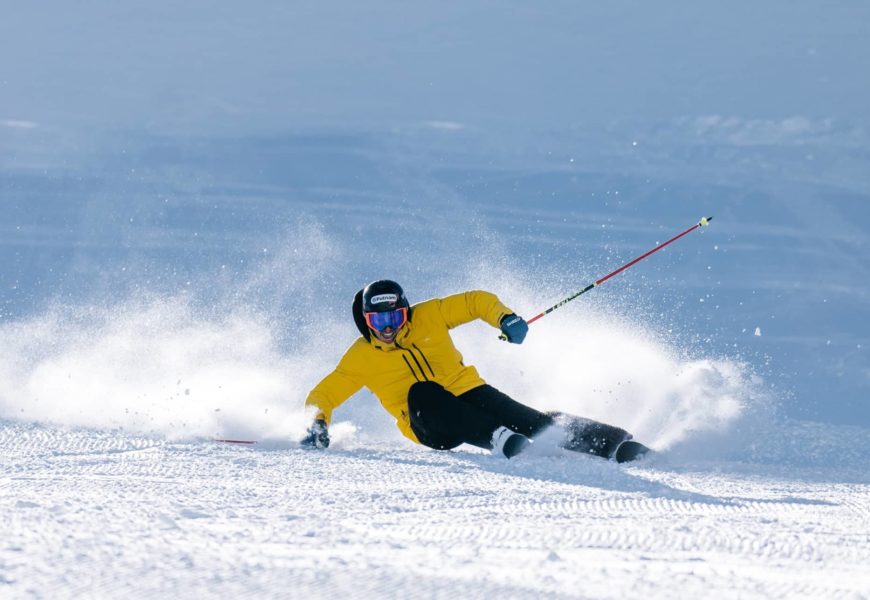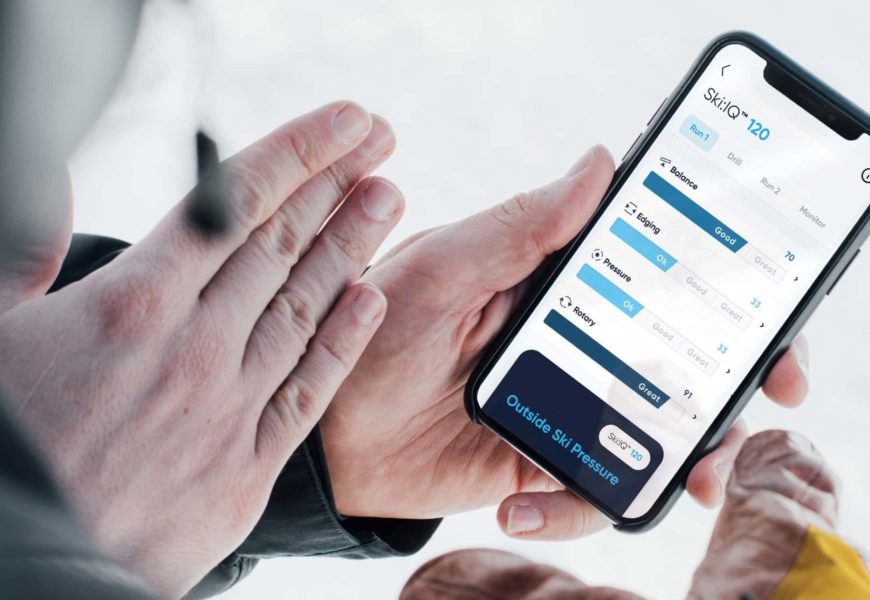How Carv turns your skiing into data

Votes:
We built Carv to give every skier an objective, accurate way to analyze and improve their technique.
Why? Because when you improve your technique you tire less, push your limits more, make more powerful turns, and deepen your love for the mountains.
I lead product and marketing at Carv and it’s been amazing to build this product. But when I talk to people, I’m often asked,
- "How can it be good if it only tracks your feet?"
- "I'm already pretty good, will it show me anything new?"
- “It's probably a gimmick”.
Skiing is a complex and dynamic sport, and turning it into meaningful data is no simple task. But that's exactly what we do - here's how it works:

Step 1: Pressure and Motion analysis

When you’re skiing, your legs, torso, arms, and head are all being used to create the right forces through the feet and, in turn, the ski. That's why we measure from the feet. Carv can sense the outcome of these combined movements, identifying both effective and ineffective patterns in your skiing technique. Let me show you how.
Carv is thin 3mm smart insert that retrofits into any ski boot and measures your motion and pressure as you ski. Each insert contains 36 pressure sensors and a motion sensor.

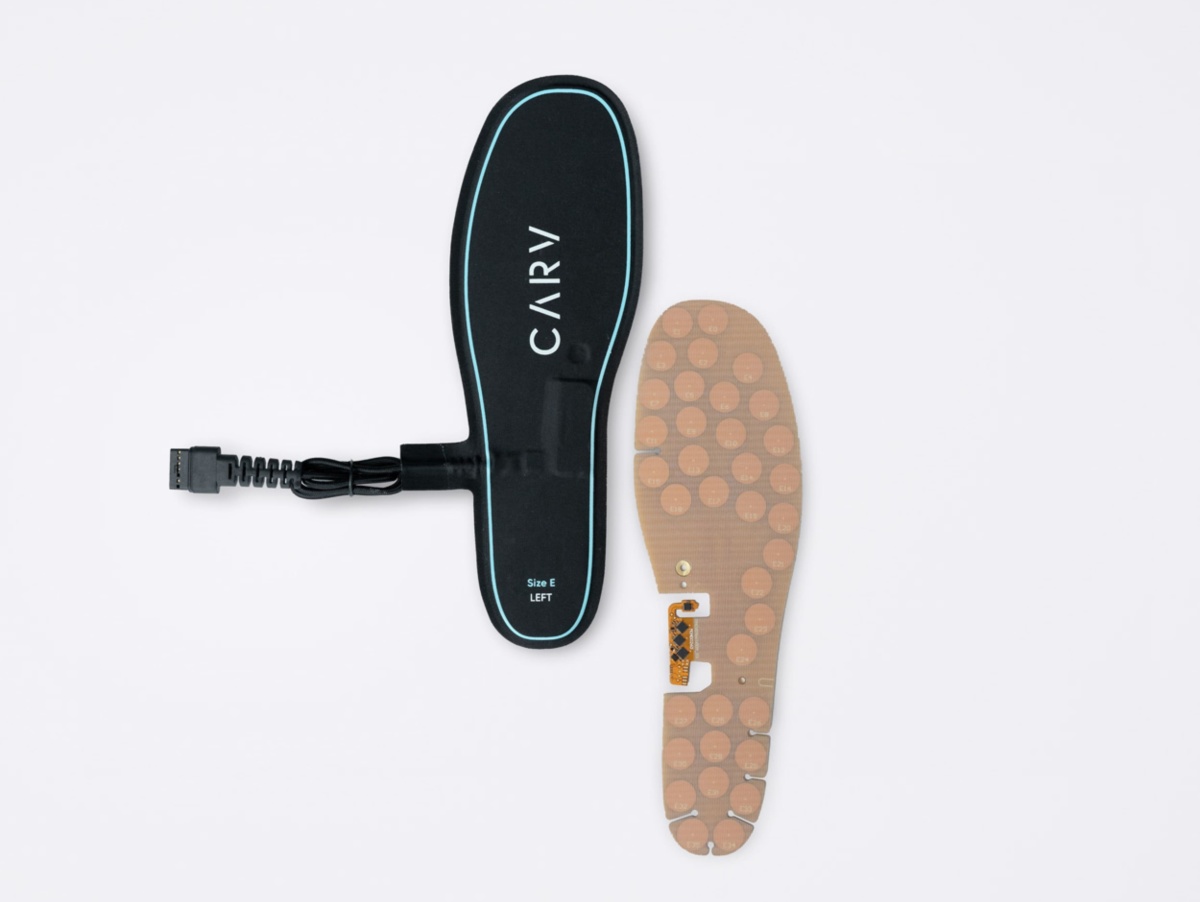
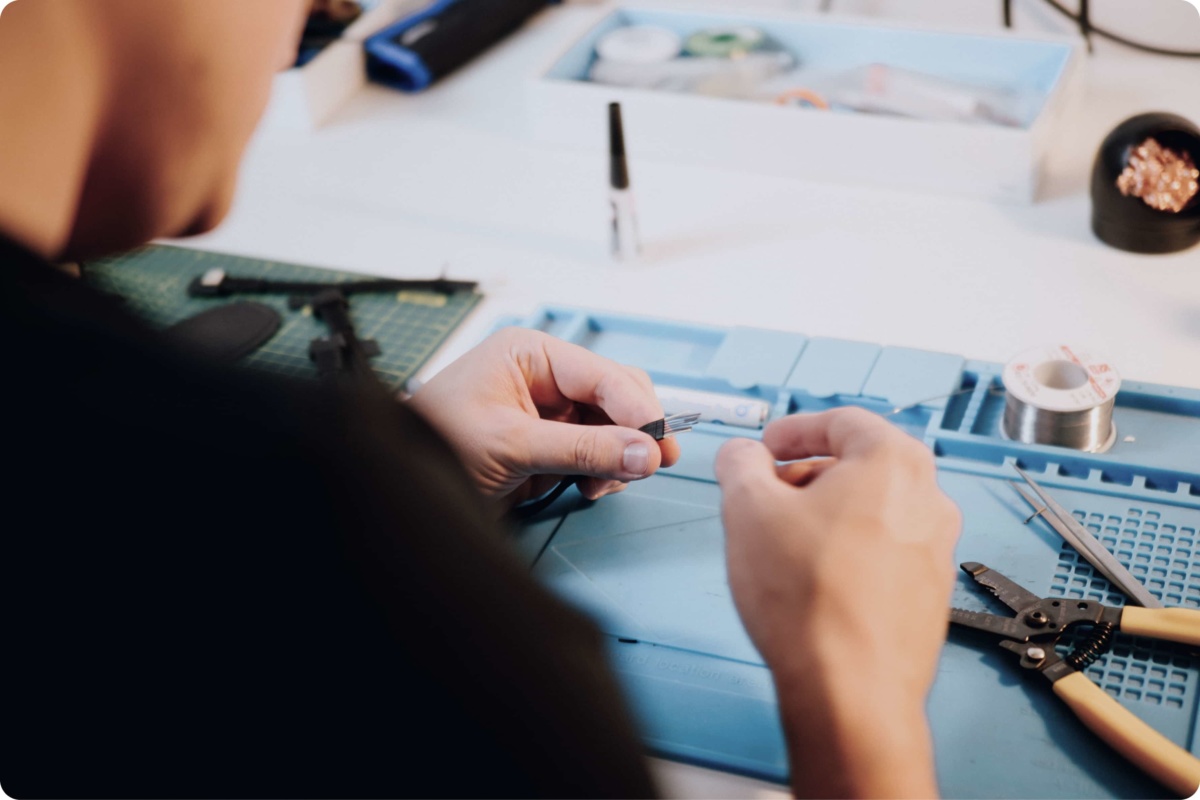
It was important for us to make the device as seamless as possible. Carv fits between the boot liner and shell. It's a one-time process to install without altering how your boots fit or feel, and it works fine alongside all custom orthotics and boot warmers.
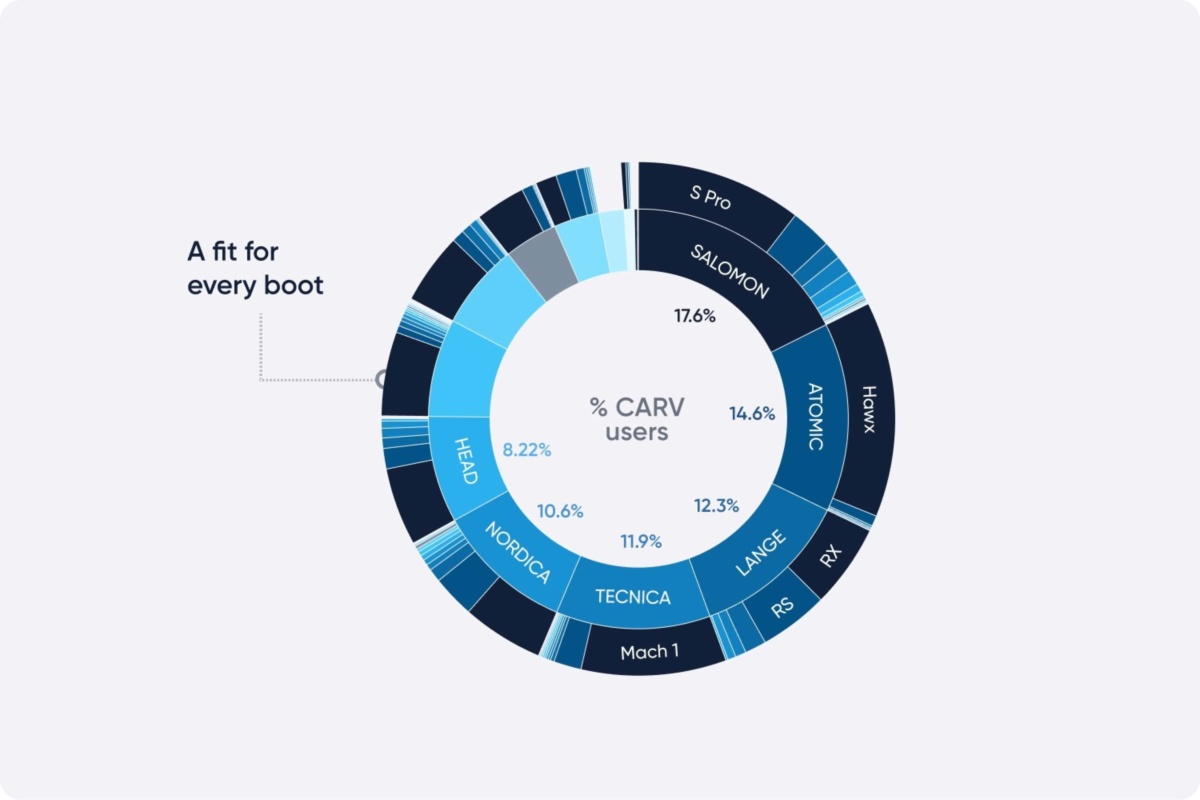
When you record your skiing, Carv sends the data via Bluetooth to your app as you're skiing. The whole process takes less than a 20th of a second.
Step 2: Processing data in real time
Carv measures every aspect of your movement 20 times a second, including:
- The movement of your center of pressure on the foot
- Outside vs inside ski pressure
- The rolling and twisting motions of your feet
- The G-force generated by your movements
To turn this data into meaningful coaching, Carv has to analyze and communicate it to you at the right time.
Automatic skiing detection
Carv has a highly-tuned AI model that can precisely work out:
- When did you start skiing? Carv will detect when each turn starts/ends automatically.
- What is the terrain like? Carv is constantly classifying the snow difficulty and terrain steepness.
- When did you start and stop? How many turns have you done, when does the segment start/stop.
- What run were we on (or not on)? Tracked with GPS and our mapping system.
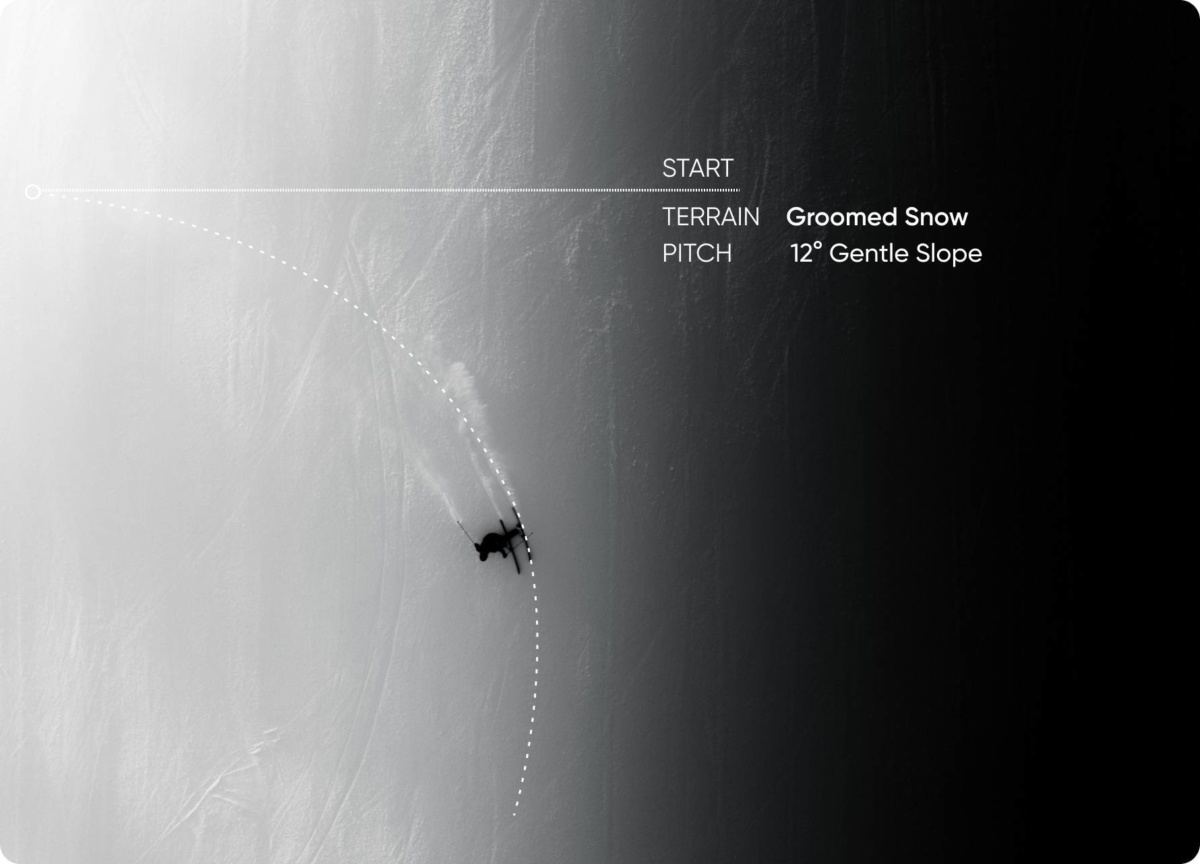
Imagine you and I ski together, each on a different type of ski. You're using long-radius skis while I'm on short-radius slalom skis, ripping tight, short-radius arcs.
Our tracks will look different. Despite these differences, Carv will precisely determine the start and end of each of our turns using our AI turn detection system.
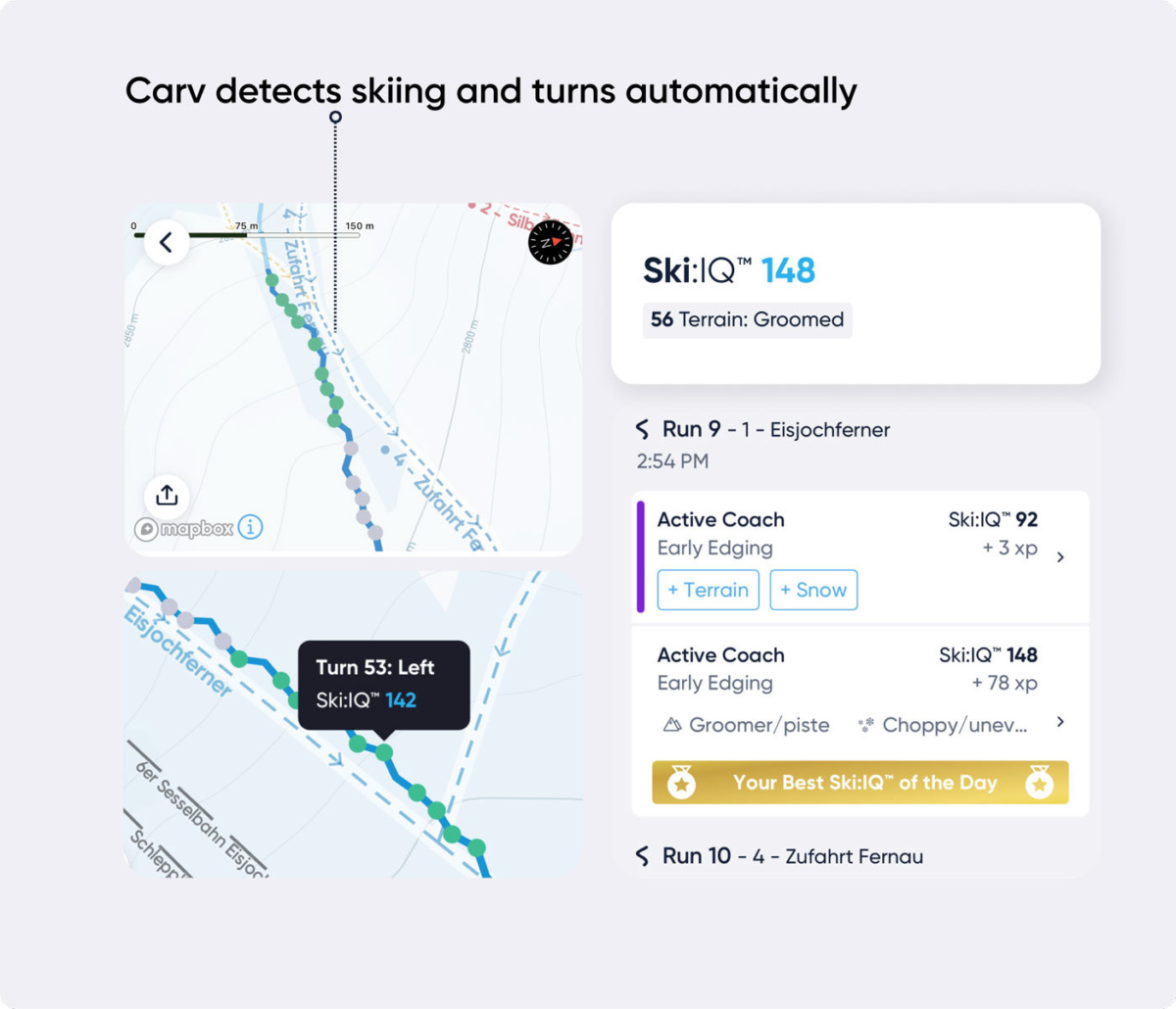
As soon as Carv recognizes the completion of a turn, it immediately processes the data to evaluate the quality of the turn before the onset of the next one. A delay of even 300 milliseconds would mean missing the timing of the analysis and the audio feedback.
Carv can precisely and instantly identify the 'turn window' and analyze each turn in real-time using less than 5% CPU on your phone. All of that happens in under 0.130 seconds.
The raw outputs of the system look a bit like this:
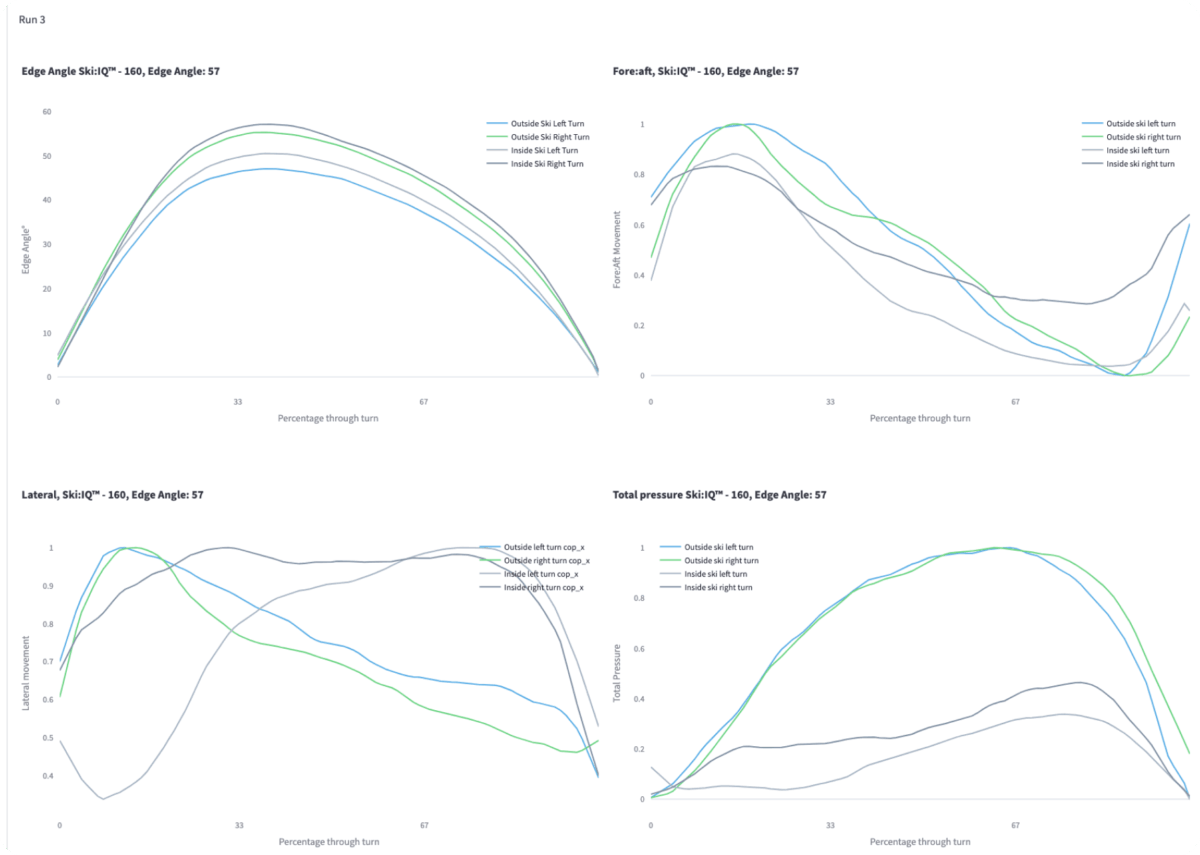
Here is the raw Carv data for Balance, Edging and Pressure for one segment from a top-level skier, Thomas Roennau in Aspen.
Translating the data into meaningful coaching
The Carv app on your phone takes motion and pressure data like the above, and breaks it down into 12 performance metrics - these are skills that describe the hallmarks of perfect technique.
Those metrics underpin the accuracy of the whole system - and drive all of your coaching.
Let's look at how that works.
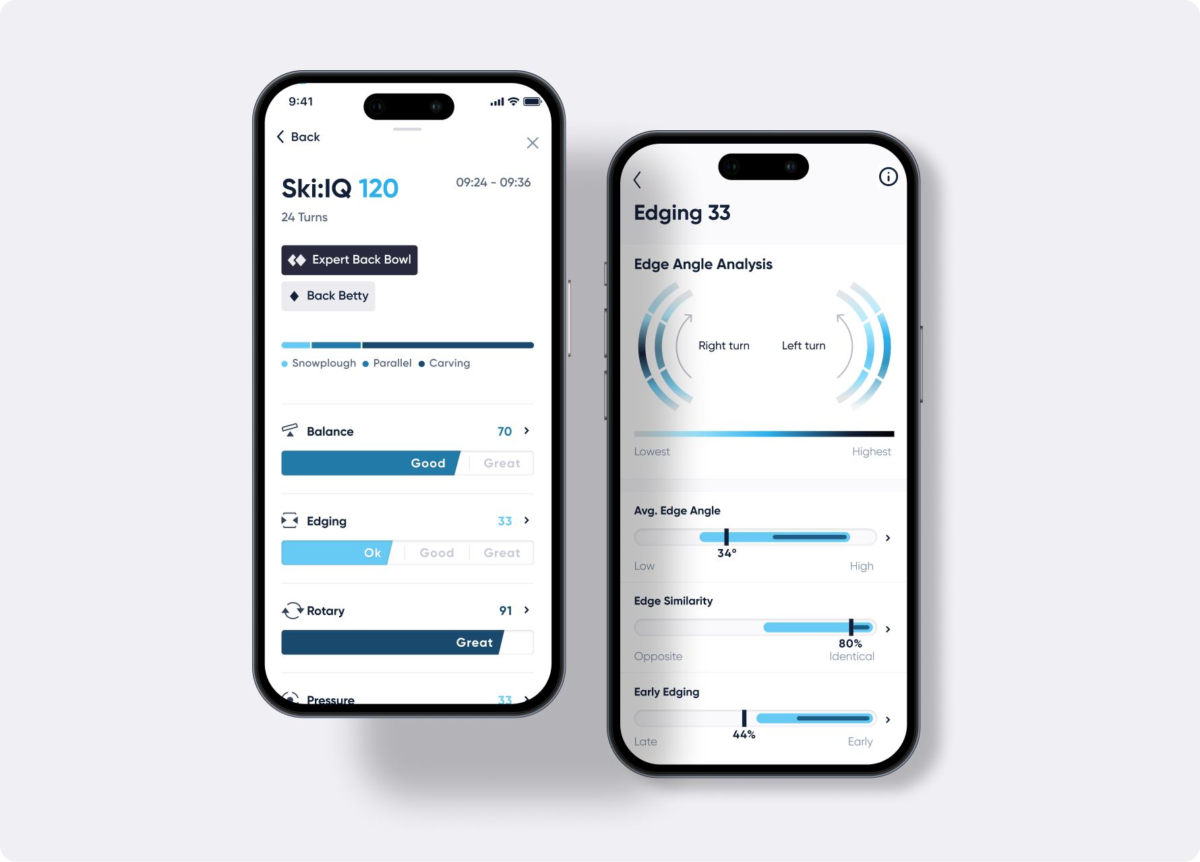
Carv scores you on 12 metrics, summarised by your Balance Edging Rotation and Pressure scores
Step 3: Detailed performance analysis
The images below show the Carv output data of all of the turns in a run, averaged together. Like with Thomas's data shown earlier. But to really understand Carv we need to understand the data - it's time to get nerdy.
Here's a quick primer on what's coming up:
- The X-axis shows the turn duration, starting at 0 and ending at 100 for each turn.
- The Y-axis displays the ski's edging in this particular example. (Carv analyzes many aspects to measure your skiing, not just edging).
- Left and right turns are in different colors to highlight differences.
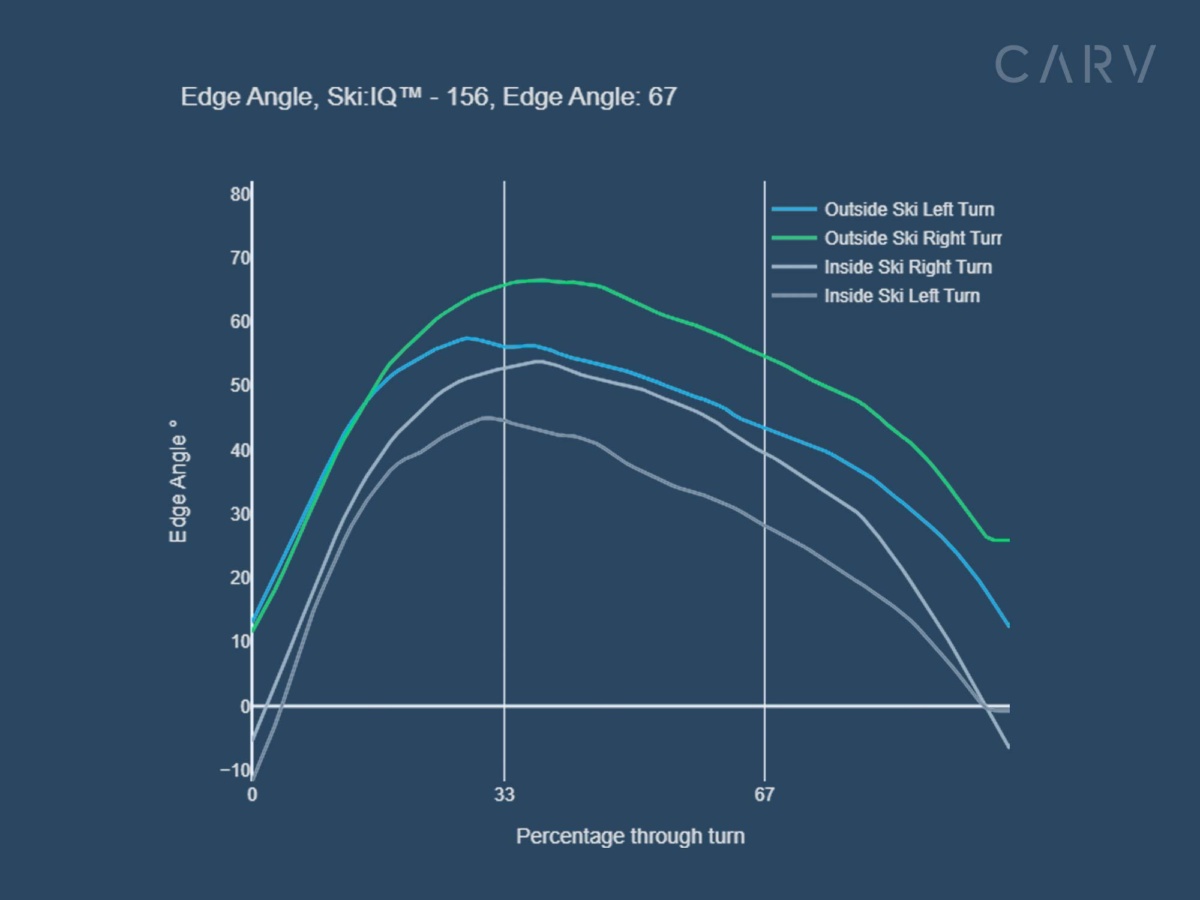
The Carv data from an expert skier
What can we tell from Carv's measurement of an expert skier.
- The skier achieves their peak edge angle early in the turn, specifically 33% into each turn.
- This is Carv's early edging metric
- They are making a 60-degree edge angle, which is a pretty dynamic, laid-over turn.
- This is Carv's edge angle metric
- The skier consistently maintains a high edge angle throughout the turn.
- This is Carv's progressive edge metric
It's also evident that this skier has a weaker left turn compared to their right turn (notice that the blue line reaches a lower edge angle than the green)
If you look at a lot of these graphs (and trust me, we do), you can start to picture this turn - this is very good skiing. The lines are clean and smooth, there is high-edge angle, the skis are moving similarly. It's not going to rival Ted Ligety, but this skier would turn heads on any mountain.

It’s when we start to look at different skiers that things get really interesting. Here are 3 skiers of different levels, through the eyes of the Carv system:
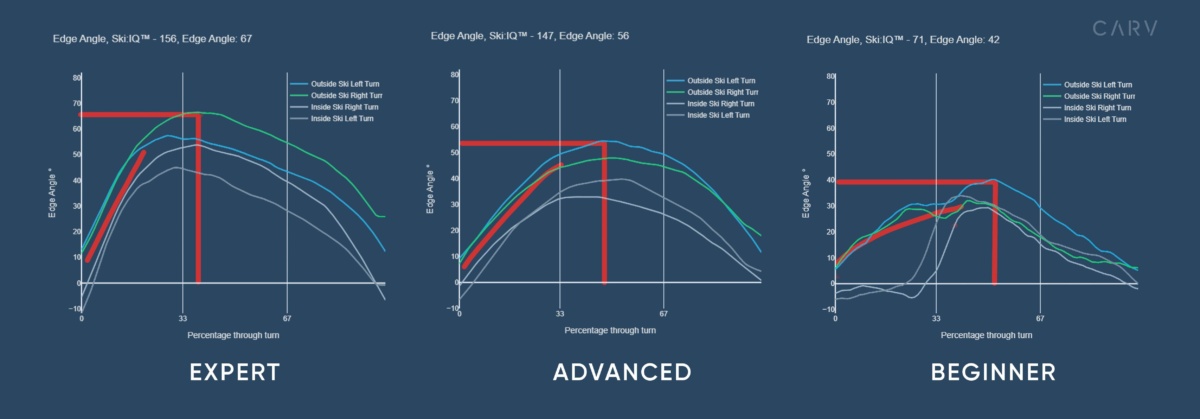
Here are 3 different levels of skier - using actual Carv skiers' data
When the Carv App measures your skiing it's able to score every level of skier based on specific characteristics it computes from the data.
Edge Angle - The beginner (on the right) is at a very low edge angle, the advanced skier (middle) is higher, and the expert (left) is the highest. In practice, this means that the expert is creating a more angulated turn.
Early Edging - The expert gets on edge much earlier than the others (the initial slope of the roll curve) - this is an important skill as it allows the expert to create a tighter arc, getting their hip down more and directing their speed across the hill.
Progressive Edge - The expert holds the high angle for a long time, making a tight arc on the snow, and controlling their speed.
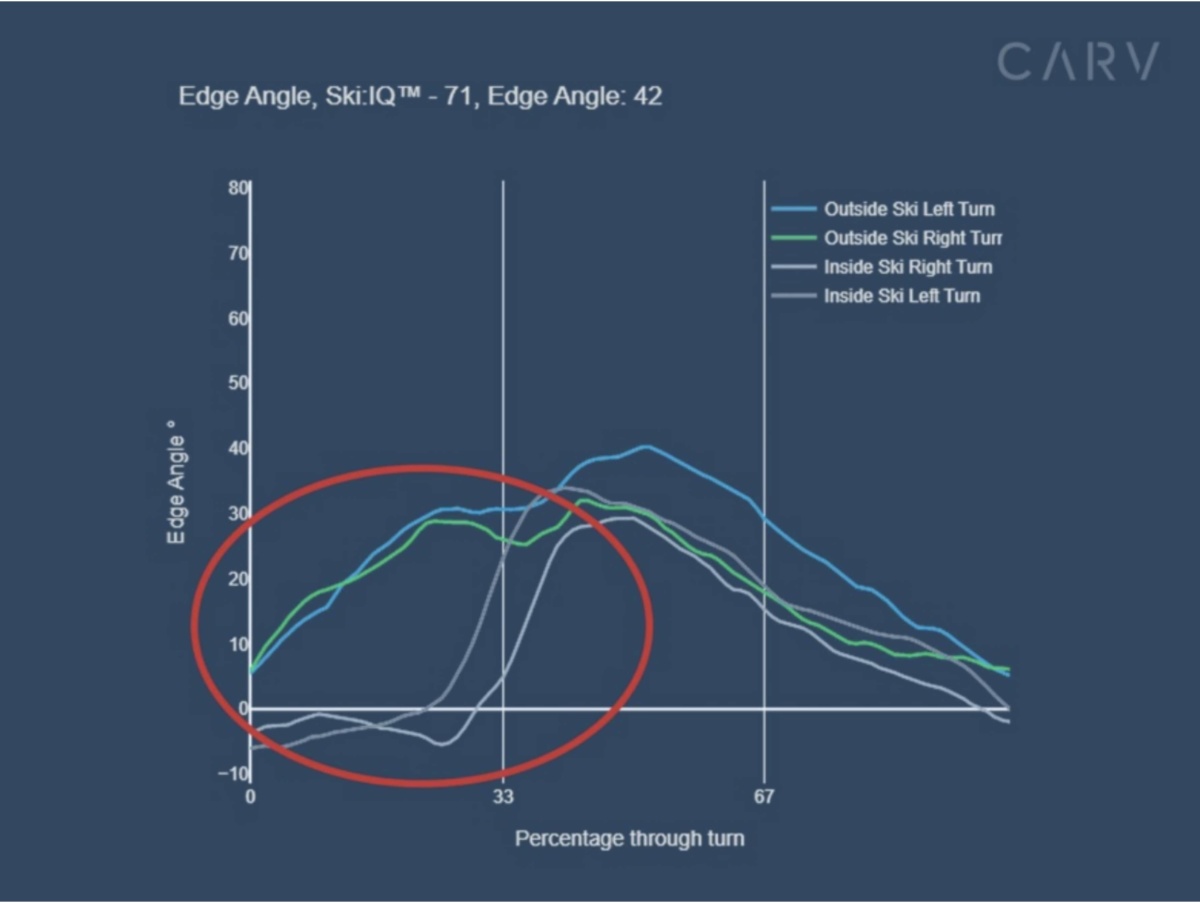
The beginner steps their inside ski half way through the turn
So what can Carv learn from this and what would it coach these skiers:
- The beginner is struggling to initiate the turn with parallel skis.
- Carv would likely coach them on edge similarity and how to ski with a parallel start of turn.
- The advanced skier is carving but not at a high angle and with a low early edge engagement, they will find they can only carve when the slope is gentle as they will struggle to direct momentum sideways in a tighter carving turn.
- Carv would likely coach them on early edge angle and creating a higher angle
- The expert has great early edging and edge angle, but can do more to improve their left turn.
- Carv would likely coach them on symmetry or keeping their angle for longer in the turn.
Carv's edge similarity metric measures the edging pattern of both skis
Step 3: Turning data into performance analysis
With this level of data for over 400 million turns, we have the world’s most comprehensive technique dataset in skiing.
We work with top instructors to isolate the most important components of ski technique and then we create a measurable, data profile for it - just like the examples shown above.
This is what you see in your app
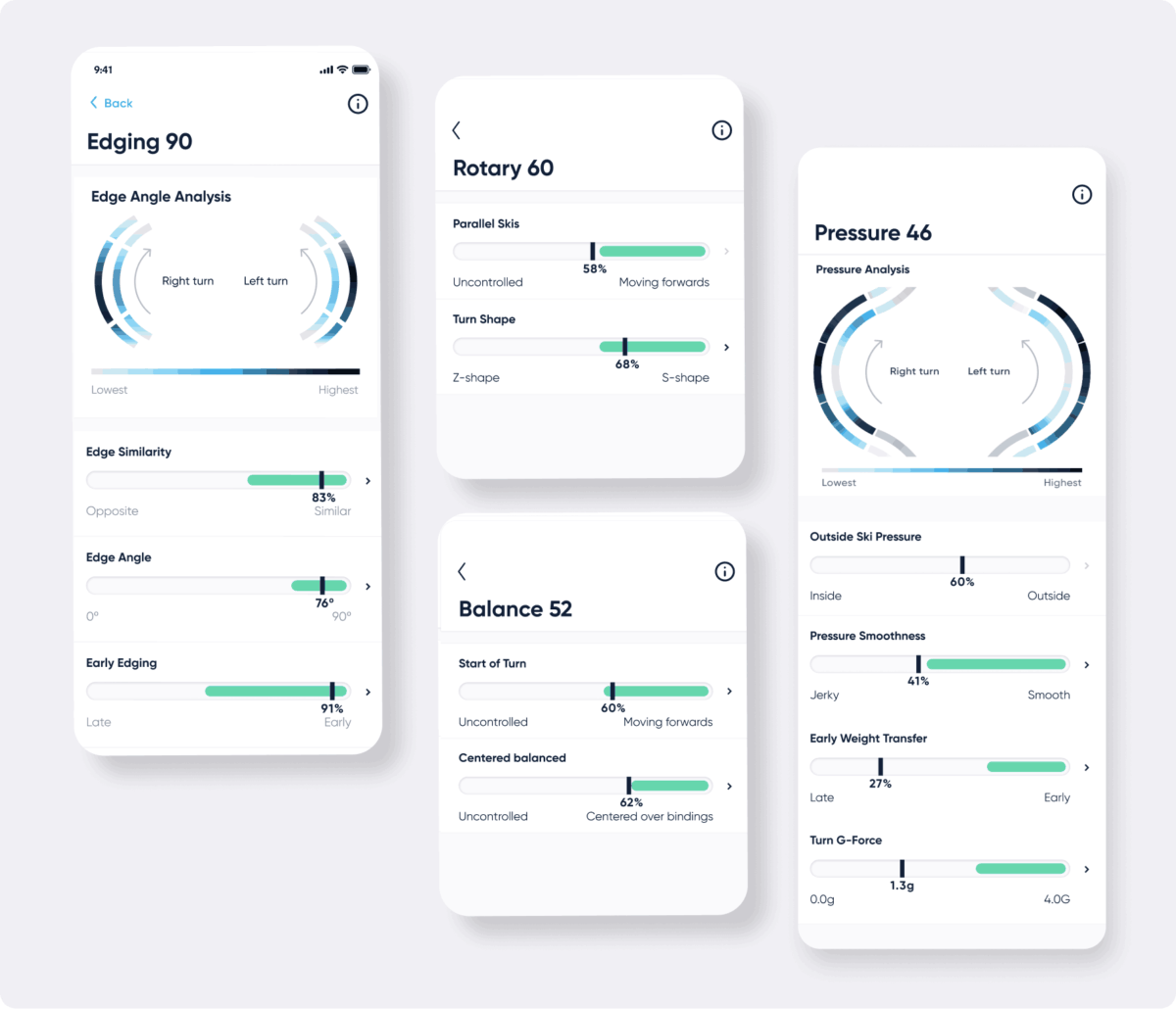
Every time you ski, Carv is assessing you on the following:
Balance
- Early Forward Movement
- Mid-Turn Balance
Edging
- Edge Angle
- Edge Similarity
- Early Edging
- Progressive Edge Build
Rotary
- Parallel Skis
- Turn Shape
Pressure
- Outside Ski Pressure
- Pressure Smoothness
- Early Weight Transfer
- G-Force
Ski:IQ™
These metrics make up your overall Ski:IQ. This is a score that summarizes your ability on every segment you ski, allowing you to track your progress and target areas to improve.

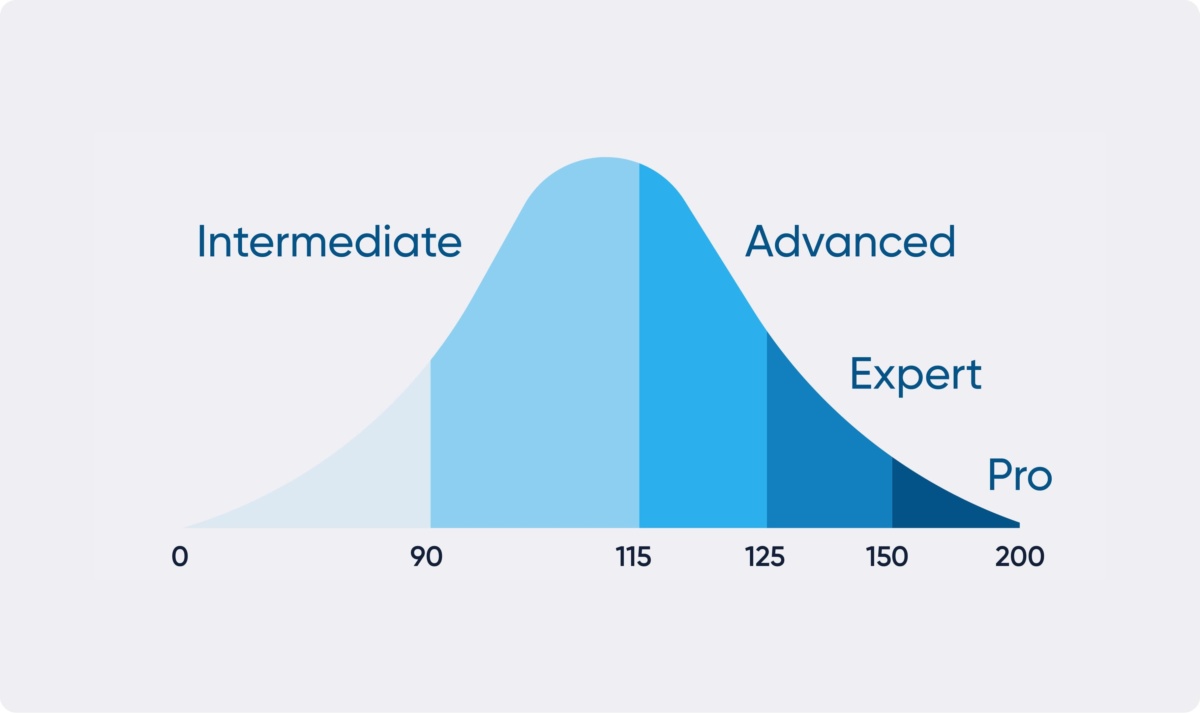
Intermediate Ski:IQ™: 90-115
Advanced Ski:IQ™: 115-140
Expert Ski:IQ™: 140+
Ted Ligety Ski:IQ™: 168
Step 4: How does this data help you improve?
Carv is built to do more than just assess your ability. It also shows you how to improve.
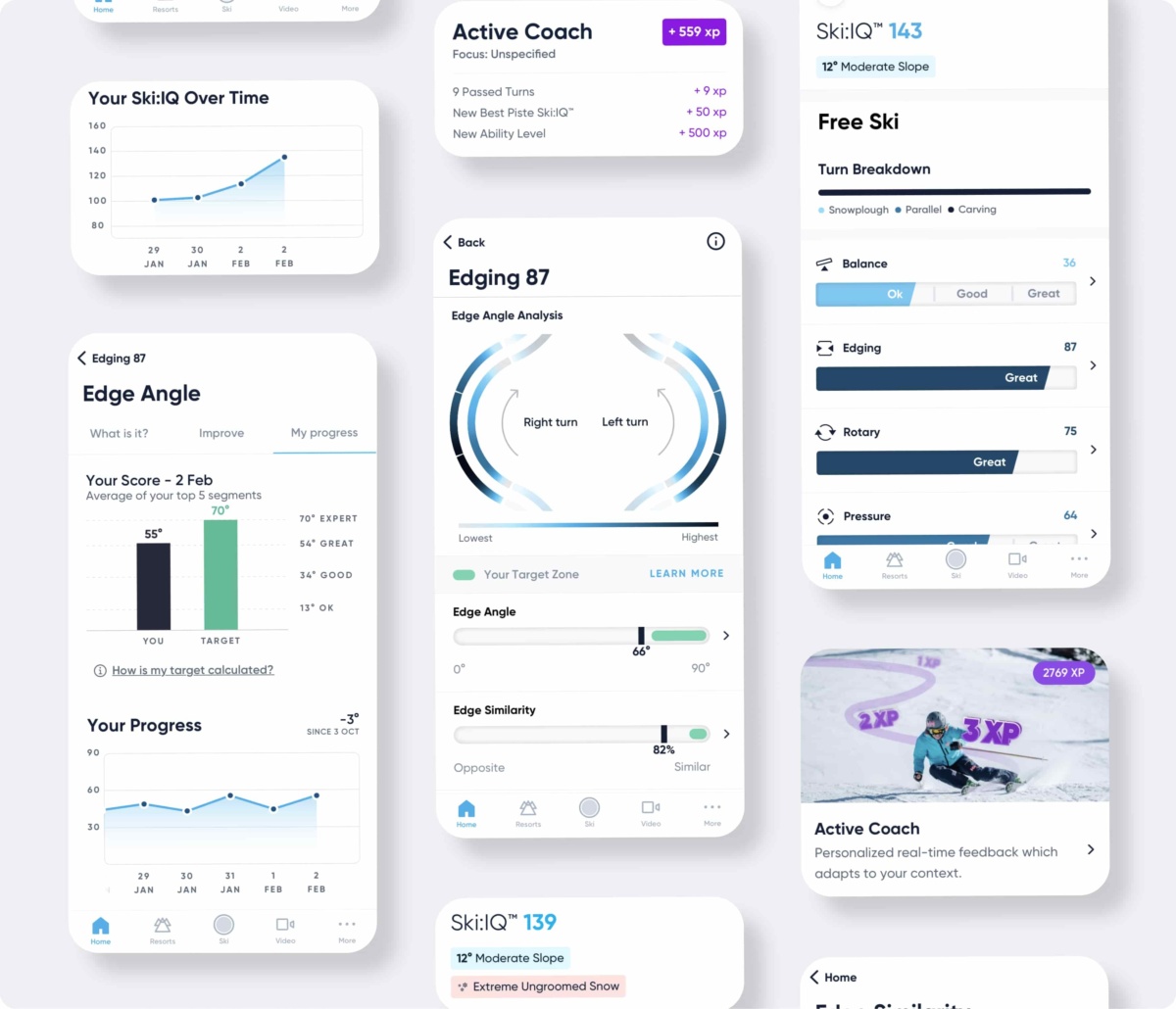
The system identifies the one metric that is holding you back from a higher Ski:IQ.
Carv gives every skier their own focus area, giving you in-app tips, chairlift audio coaching and real-time coaching while skiing to help you improve it.
There are multiple ski modes in the app which will allow you to train in different ways. If you want a lot of real-time feedback when you ski, active coaching mode is a great choice. It gives you an audio score on every turn via your Bluetooth headphones.
But if you want to track your technique as you ski, you can use Free Ski Mode to get a tip on the chairlift.
Carv is a tool that gives unparalleled insight into ski technique, objective real-time feedback, and the opportunity to get better at skiing at an unprecedented rate.
The key to improving? Getting the right data.

